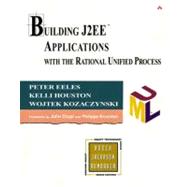About This Book
This book is about developing Java 2 Platform, Enterprise Edition (J2EE) applications with the Rational Unified Process (RUP) and the Unified Modeling Language (UML). There are a number of books describing the J2EE platform and its associated technologies. There are also books about software development processes and about RUP, in particular. However, we could not find a book that described and exemplified how to use a subset of RUP that contains only the most relevant parts of an otherwise large and comprehensive process, to build J2EE applications. The book bridges this gap between the RUP and J2EE technologies.
A world that combines J2EE, RUP and UML is complex. This world requires a good map if you are to successfully navigate your way through it. This book provides such a map both metaphorically and literally. It is metaphorical because the very objective of the book is to provide a description of a "safe path" through the J2EE application development activities. It is also literal because we define a "J2EE Developer Roadmap," which is a process map, to guide us. We describe the content of the book in more detail in Chapter 1, Introduction.
Who This Book Is For
While writing the book we kept three audiences in mind. The first audience is software architects, designers and developers familiar with the J2EE platform and its technologies, wanting to understand how to apply them in the context of a software development process. The second audience is development team members familiar with RUP, looking for help in applying the process to J2EE development. The third audience is software professionals who are neither familiar with J2EE nor with RUP, and are looking for an example of how to use RUP in the development of a J2EE application.
Conventions Used in This Book
The book is roughly divided into two parts. The first part, Chapters 2–5, summarizes the J2EE technologies, introduces RUP and the J2EE Developer Roadmap, and briefly describes our sample application. The rest of the book is what we refer to as the "process chapters" and contains a guided tour through a J2EE application development project.
We structured the process chapters to make them easy to read "at a glance," and to make it easy to refer to specific topics of interest. Each process chapter is organized primarily by activities. We provide diagrams that indicate the overall flow between the activities and the key artifacts that are consumed and produced by the activities. For each activity, we provide an overview table that summarizes the purpose of the activity, its input and output artifacts, and a summary of the steps performed within the activity. Following the table, we then describe the details of each of these steps, using the sample application.
In the process chapters, we use only one simple editing convention: we emphasize all references to process elements such as activities, steps, and artifacts.
0201791668P08012002








